| Quite often you find a stand of dead trees. This can be because of fire but
here it is caused by melting permafrost drowning the trees. |  |
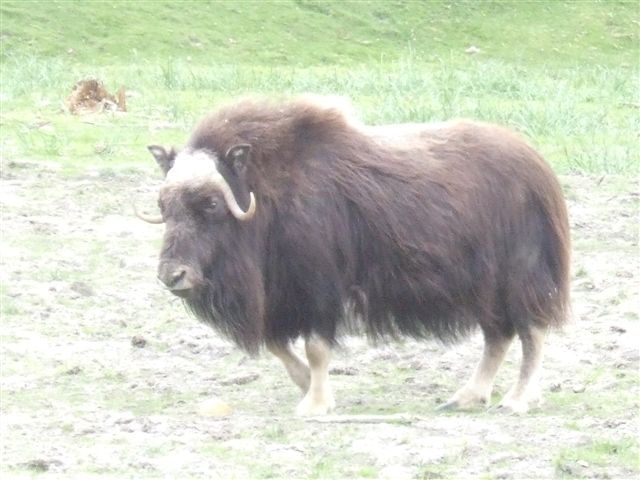 |
We went to the Alaska Wildlife Conservation Centre at Portage on the road
south from Anchorage. This is a musk ox. They normally live much further
north in Alaska where their thick coats keep them warm. |
| This little creature
about two feet long and in constant motion is a porcupine. The sharp spines
we think of are hidden in its fur and are only seen when it needs to defend
itself. All the animals at this centre are likely to have been injured or
orphaned and often cannot safely be returned to the wild. | 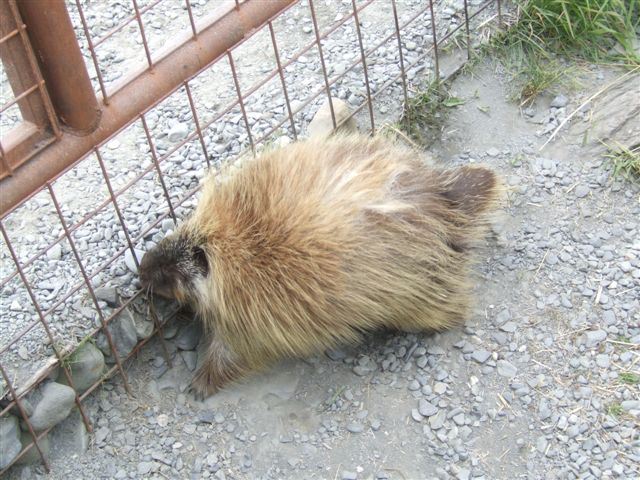 |
 |
Only male moose grow antlers which they do each year. They can weigh
1200-1600lbs when fully grown. Females are slightly smaller. |
| All the moose here are
orphans and are unlikely to be released to the wild because they have not
had parents to teach them necessary survival skills. | 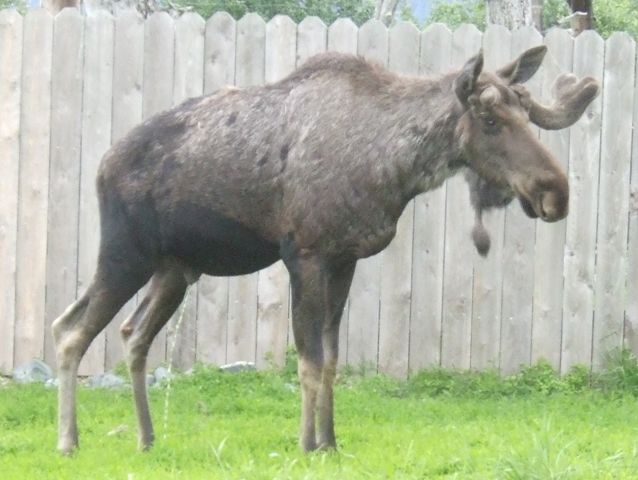 |
 |
This one was only a few days old. Usually it is the calf which dies. This is
one of twins born six weeks ago and their mother was killed probably in a
road accident. |
| There are only brown
bears and black bears although the colouring of both varies. They come in a
range of sizes mainly depending on their habitat and therefore their food.
This is a black bear. |  |
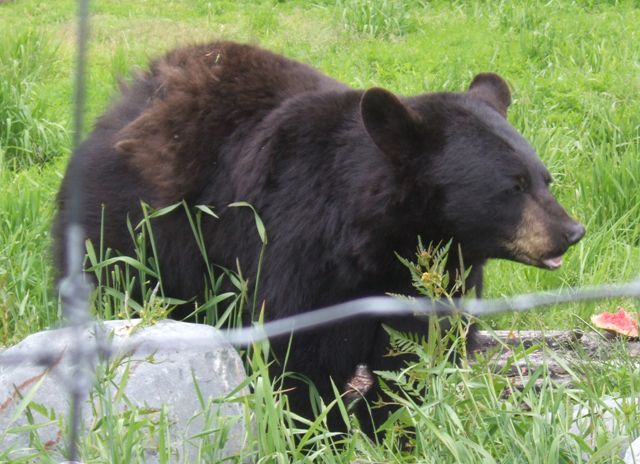 |
Their average weight is about 200lbs. They are mostly vegetarian but are
known to kill moose calves. |
| This is the other sort of
bear called the brown or grizzly bear. The inland ones are more vegetarian
and smaller than the coastal ones which have a lot of salmon in their diet.
Fully grown they can weigh over 1000lbs. |  |
 |
The colour range is large with those in Denali being very pale, almost
blond. |
| At birth they are blind
and hairless and weigh less than two pounds. Hard to believe! Of mammalian
species they have the smallest babies relative to their ultimate adult size. | 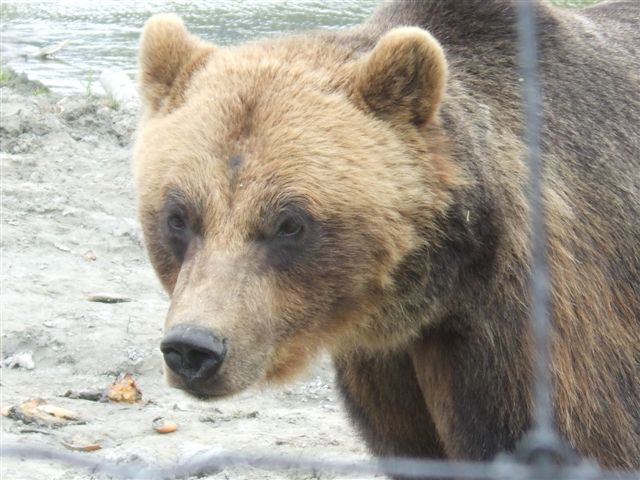 |
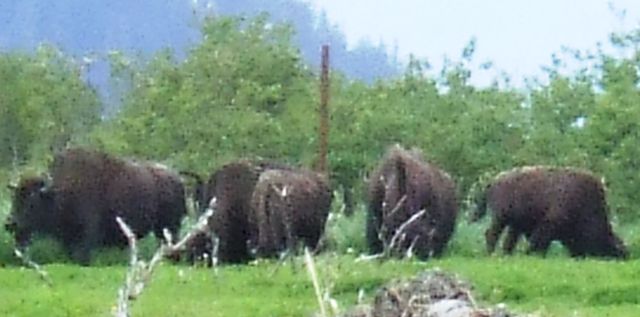 |
There are two sorts of bison. The wood bison are the larger and rarer. In
1900 there were less than 300 left. Two were born last year, the first in
Alaska for 100 years. It is hoped to eventually reintroduce them into
the wild. |
| The ordinary plains bison
is smaller and less endangered. This one could be either but I think most of
the bison at the centre are wood bison. Today plains bison are often farmed. | 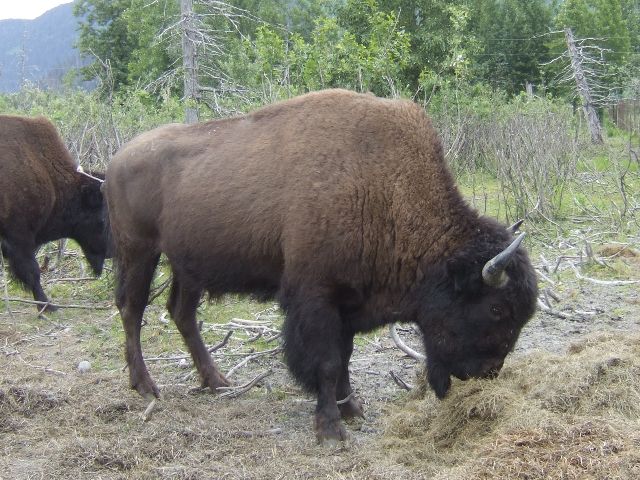 |
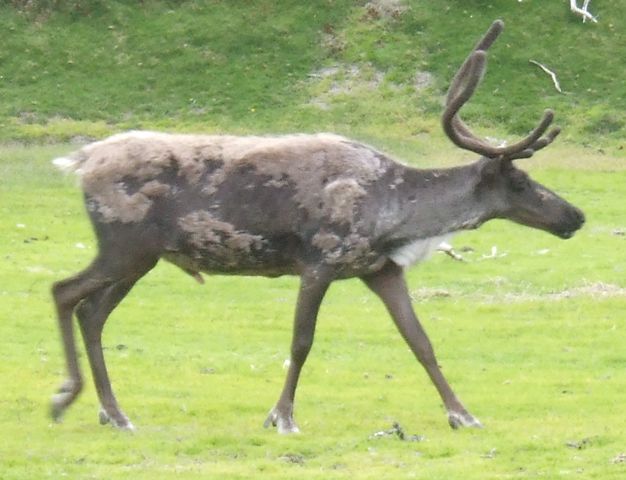 |
They have both elk and caribou in the centre. I think this is a young elk. |
| These are probably elk.
Reindeer are the domesticated caribou and originated from Siberia. | 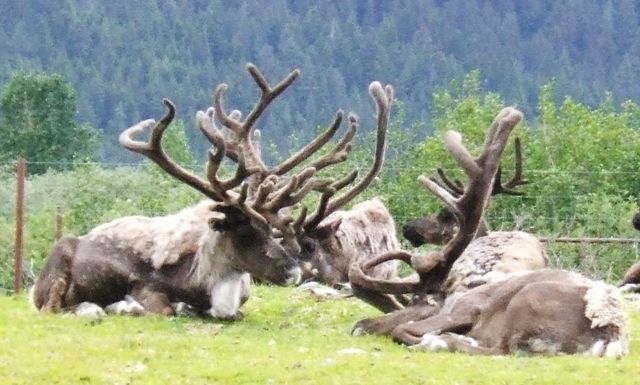 |
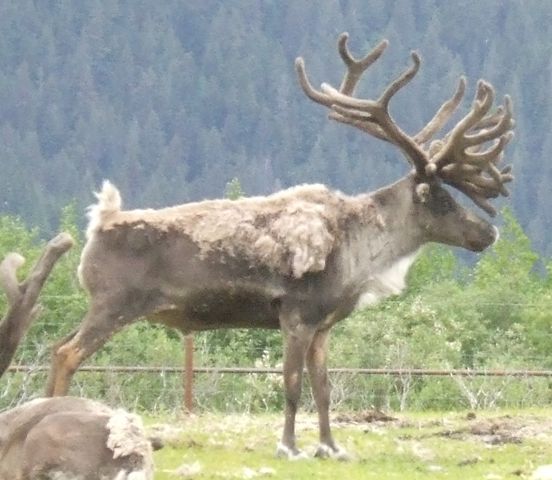 |
Another shot of the elk. They moult their coats each year |
| A reindeer especially for
the kids. |  |
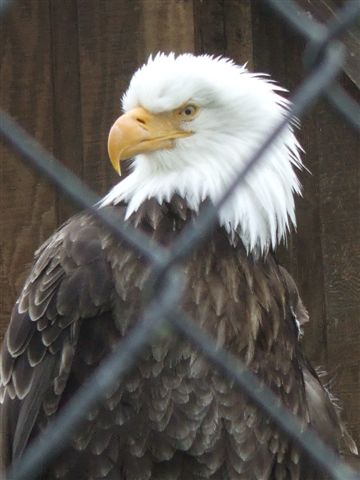 |
Sam - the American bald eagle. This one lost its left wing in an accident
and can no longer fly. |
| Very difficult to see
because of the lighting. This is a great horned owl. It hunts at night,
cannot move its eyes but can rotate its neck 270 degrees. | 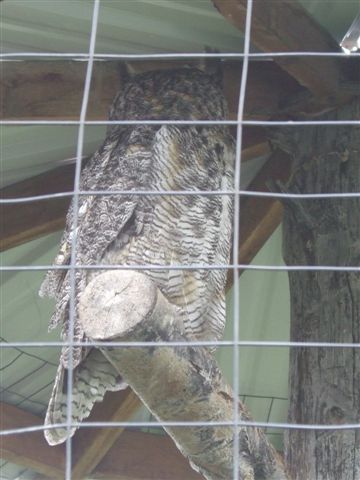 |
 |
A young red fox, found abandoned on a local airfield, being walked by its
handler. It was becoming quite strong and aggressive. Foxes are instinctive
hunters and this one will return successfully to the wild before long. |
| Onward into the Kenai
peninsula. This is serious fishing country. | 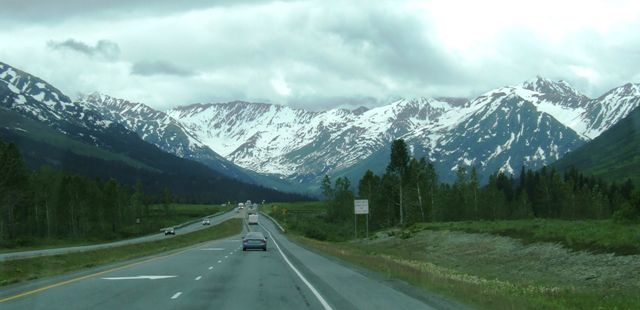 |
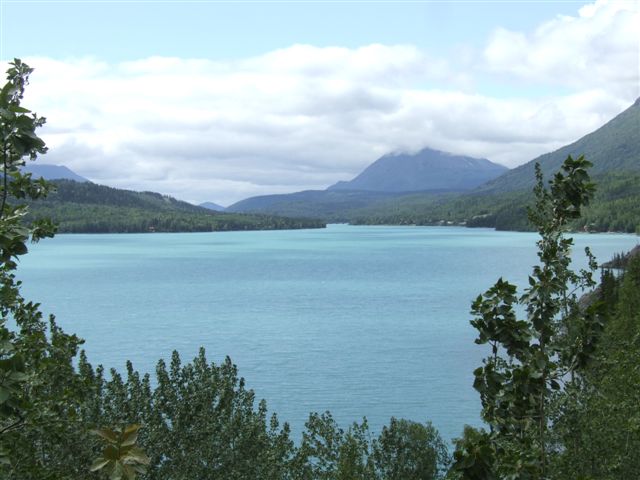 |
It is full of lakes and streams. We have left the road to Seward and are now
heading west to Soldotna, Kenai and Homer. |
| Oddly it seems to get
colder as we approach the coast even though we are further south than we
have been recently. There is still significant snow on the mountaintops. |  |
|